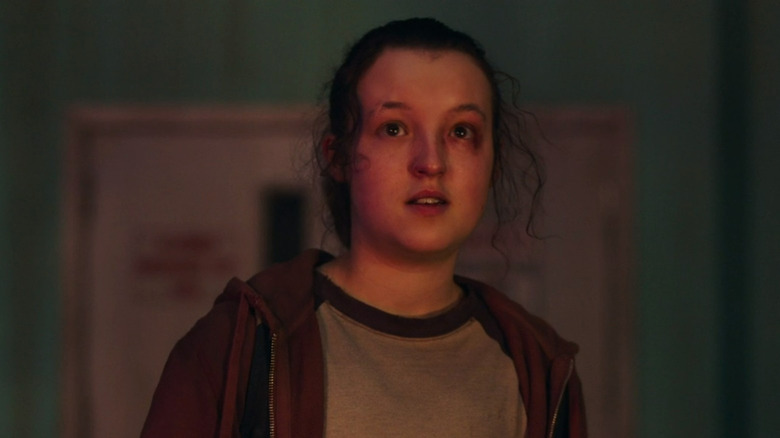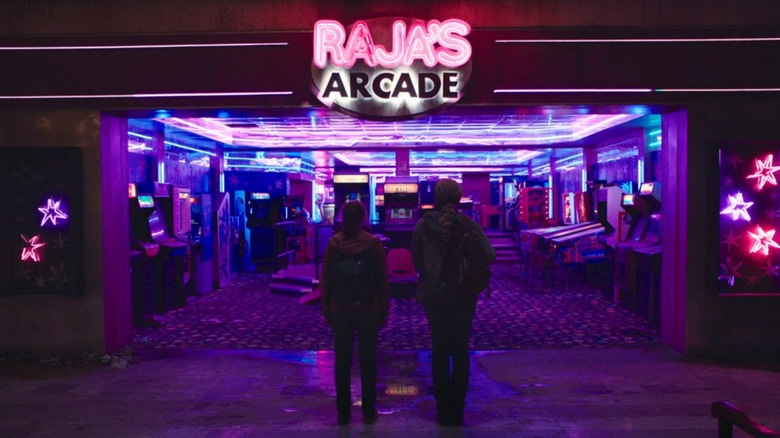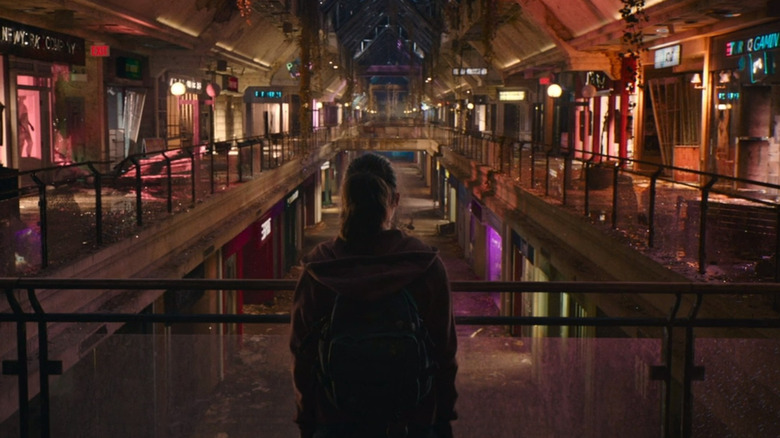The Real-Life Abandoned Mall Seen In TLOU's Left Behind Episode
Episode 7 of "The Last of Us" is the third episode of the HBO Max series to notably stray from the first video game's original plot as created by Neil Druckmann. The first was Episode 3, which reimagined a curmudgeonly secondary character's life as something that had viewers crying from start to finish. The second was Episode 6, which seeded plot points that weren't featured until "The Last of Us Part II," Naughty Dog's second installment in the ongoing "The Last of Us" game franchise. Now, Episode 7 follows the story depicted in "The Last of Us: Left Behind," a DLC adventure for the first game.
DLC is a video game acronym which stands for Downloadable Content, media that is posthumously added to a previous purchase. While gamers around the world have a tempestuous relationship with DLC, "Left Behind" is broadly considered to be a phenomenal addition to the main story. Just as in the DLC, HBO Max's adaptation primarily features a singular location: a post-apocalyptic mall.
Interestingly, half of the mall is real, which Craig Mazin — co-creator and co-writer of the HBO Max series — addressed during a podcast.
Free reign in a confined space
During Episode 7 of "The Last of Us Podcast," an official companion podcast hosted by Troy Baker, Craig Mazin admitted that the Northland Village Mall in which they filmed "Left Behind," was a bit lackluster.
"We had this interesting challenge. I was in love with the mall from the DLC, and we needed it," Mazin said. "I wanted, as much as Neil [Druckmann] wanted, to see Ellie experiencing what we all took for granted for the first time and how magical it is. Well, we got kind of lucky to an extent. There is a mall in Calgary [Canada] that was scheduled for demolition ... it was great because they basically said 'You can do whatever you want. You can break up the floors. You can [mess] up the whole place with mud and vines and everything. You have the run of it for shooting as long as you want throughout the day.'"
Despite finding a place like this, there was one problem. It was a one-story mall. Mazin went on to share that the doomed mall technically featured an escalator, but it led to a partial second floor with a dismal view and only two or three stores.
It certainly didn't fit the bill required for what Mazin envisioned, nor for what Druckmann had created in the original DLC. Now, keen-eyed viewers will note that the mall in Episode 7 of "The Last of Us" was not one story tall.
Expanding beyond reality
Perhaps unsurprisingly, the Northland Village Mall was expanded with visual effects. What might be surprising, however, is just how intensive that process became. The decision to digitally enlarge the space effected everything, including standard practical shots, which would have otherwise been far easier to wrap.
"The shot where we're behind Ellie and we see that mall coming on, that wasn't at the mall. That was on a sound stage," Craig Mazin said. "We built a little railing, and then there's just blue ... We say to Alex Wang, our visual effects supervisor, 'You're going to have to figure this out,' and he was scared. That was one of the few times I saw him scared because that is a very difficult thing to pull off, and when we were in the physical mall, we needed to kind of paint a blue stripe where the first floor kind of ended to say 'From this point up, we're going to be building out and set extending with visual effects.'"
Mazin also admitted that several conversations were had in regard to keeping the mall truncated, but he simply couldn't get behind the change. In his mind, the extra effort and expenditure was worth the magic of a sprawling, dilapidated spectacle.
Episode 7 of both "The Last of Us" and "The Last of Us Podcast" are now streaming on HBO Max and Apple Podcasts, respectively.


